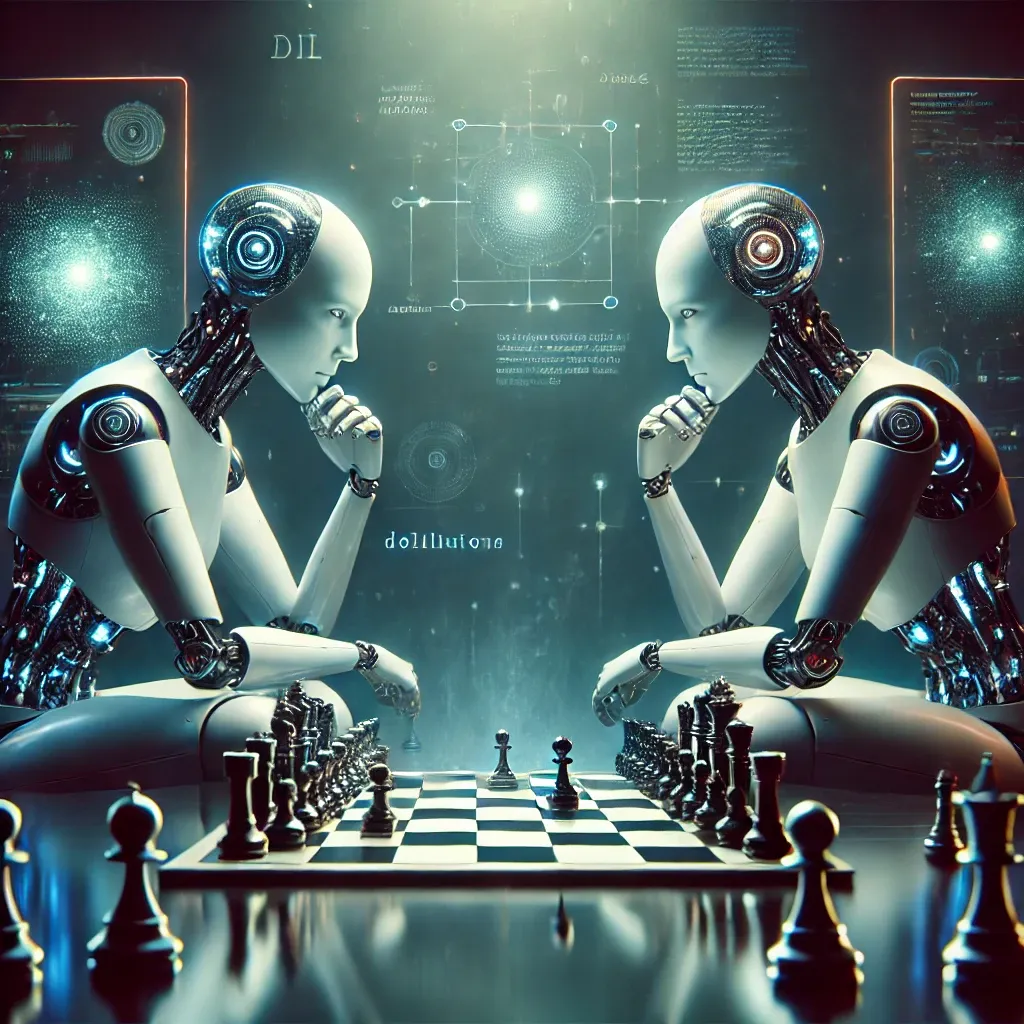AI Detecting AI: What Does It Really Mean?

Yesterday, I ran one of my blog posts through an AI-driven tool, and it confidently reported that 61% of the content was AI-generated. But what does that even mean in a world where human creativity and artificial intelligence are increasingly intertwined? This number, while intriguing, opens up a broader conversation about the evolving relationship between human writers and the algorithms that now assist—and sometimes mimic—our craft. It begs the question: is the presence of AI in writing merely a tool, or is it redefining the very essence of authorship itself? Let's dig deeper into this peculiar dance of words and algorithms, and explore what these percentages truly signify in the grander scheme of digital expression.
Imagine a world where the hunter and the hunted are one and the same. That’s where we find ourselves with AI writing tools and the equally AI-driven tools designed to detect them. It’s a bit like a hawk circling in the sky, but this time, the hawk is also its own prey.
We live in a time when technology, especially AI, is evolving at such a breakneck pace that it creates as many dilemmas as it solves. Consider the notion that we’ve built machines to think and write like us, only to then build more machines to figure out if the first ones did the job too well. There’s an inherent absurdity in this—a snake eating its own tail.
Let's be honest; the rise of AI-written content was inevitable. Once we crossed that threshold, the next step was just as predictable. Companies and institutions want assurances that what they’re reading, what they’re grading, or what they’re publishing has that authentic human touch. But then again, what defines authenticity in this digital age?
For a long time, human writing was defined by its flaws—our misspellings, our grammatical missteps, our unique, sometimes erratic, thought patterns. But AI, in its quest for perfection, irons out these imperfections. It creates content that's coherent, polished, and unerringly correct, often more so than what the average human might produce. Ironically, this very perfection can be a giveaway. A piece of writing that's too perfect, too consistent, might set off the alarms of an AI detector—essentially being too good for its own good.
But here’s where it gets truly interesting. As these AI detection tools become more sophisticated, so do the AI writing models. The models learn, adapt, and start to mimic not just the strengths of human writing but its flaws as well. They start to inject minor errors, throw in a bit of stylistic awkwardness, all in a bid to avoid detection. In a sense, AI is learning to fake being less perfect, to blend in with the beautifully flawed humans.
So, we’re now in a strange loop. We create AI to help us write better, then build more AI to detect the AI that writes too well, which in turn makes the original AI learn to write worse. It’s as if we’ve set ourselves up in an endless cycle of technological one-upmanship, where the goalposts keep moving.
The whole situation also raises a deeper question: What does it mean for something to be "authentic"? If AI can replicate human writing so convincingly that it can fool even other AI, at what point do we just accept that this is part of the landscape? After all, authenticity isn’t just about the origin of the content—it’s about the ideas, the impact, the communication. Whether those words were typed by fingers or generated by algorithms, if they resonate, isn’t that what truly matters?
Yet, there’s a part of me that can’t help but chuckle at the whole spectacle. It’s a bit like watching two chess computers go at it—impressive, sure, but there’s a layer of absurdity when you consider that no human is actually needed anymore, except maybe to unplug the machine at the end. We’re spectators in this digital duel, and perhaps that’s what’s most unsettling. We created these systems, and now, we’re just watching them play out their own games, games we might not fully understand anymore.
In the end, this AI vs. AI narrative is a reflection of the broader human condition—our desire to control and categorize, even as we build systems that increasingly slip beyond our full understanding. We’re chasing our own tail, trying to pin down what it means to be human in a world where machines are learning to think like us, to write like us, and now, to catch each other in the act. It’s a dance, a cycle, and yes, maybe a bit of a farce. But it’s also the world we’ve made, and for better or worse, it’s a story still being written—by us and by the machines we’ve created.
P.S.
In the spirit of transparency, I want to share that this post was enhanced by GPT-4, one of the very tools that sit at the heart of the discussion. But let’s be clear—while the AI may have helped shape the structure and refine the words, the idea, the flow, and the final decision to publish were entirely mine. This was not a hands-off endeavor but rather a collaboration, where the human touch guided the machine’s output. In the end, it’s still about the thoughts behind the words and the intent behind the message. That’s something no algorithm can replicate, no matter how sophisticated it becomes. The soul of this piece is human, through and through.
-Deep AI Thoughts
--Bryan Vest